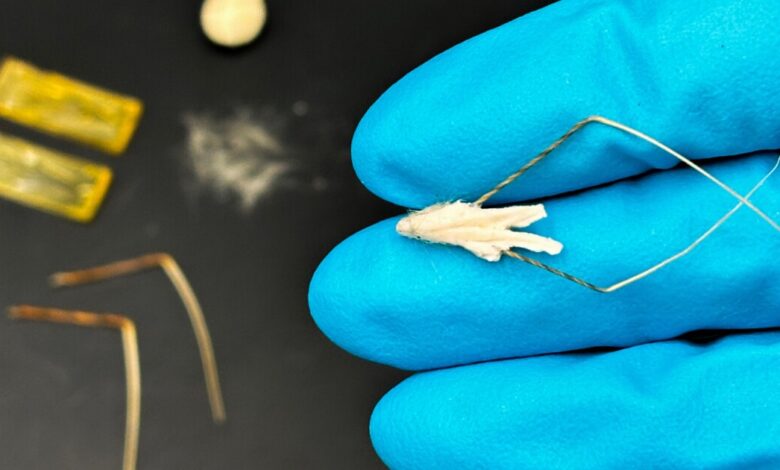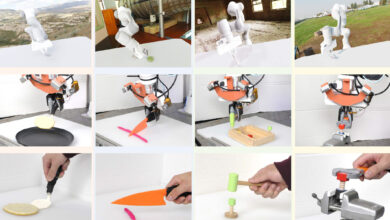Self-planting bio-hybrid “robotic seeds” inspired by wild oats

Scientists have replicated the ingenious seed-delivery system used by wild oats, resulting in a seed-carrying bio-hybrid “robot.” Scores of the tiny devices could one day be utilized for much easier, more effective aerial seeding of crops or even new forests.
Each seed of the wild oat plant (Avena sterilis) is contained within a husk with two long arms known as sister awns, which protrude out to one end.
When the seed lands on the soil after being released by the plant, moisture absorbed from that soil causes the awns to twist and rotate, building up elastic energy while simultaneously raising their end of the seed off the ground.
When that energy is suddenly released, the pointed other end of the seed is pushed down into the soil. Back-facing hairs along the outside of the husk then help keep the seed planted.
Istituto Italiano di Tecnologia – © IIT, all rights reserved
Researchers from the Istituto Italiano di Tecnologia (IIT-Italian Institute of Technology) and Germany’s University of Freiburg set out to copy that mechanism in a device which could be utilized to deliver seeds of just about any kind. The result is a little something called the HybriBot.
At the heart of the bot is the seed (and a bit of fertilizer), which gets encapsulated inside a molded capsule made of flour and water. Once that capsule has dried, it’s coated in ethyl cellulose, which is a water-insoluble eco-friendly biopolymer often used for the controlled release of fertilizers into soil.
Instead of utilizing a synthetic equivalent of the sister awns, the HybriBot simply uses actual awns taken from real wild oat seeds. It likewise incorporates real oat seed husk hairs. The whole bot tips the scales at 60 mg, which is roughly three times the weight of a natural wild oat seed.
Istituto Italiano di Tecnologia – © IIT, all rights reserved
While the production process may sound rather fiddly and time-consuming, the researchers tell us that automated robotic assembly systems should allow hundreds of thousands of seed-loaded HybriBots to be produced quickly and inexpensively. And importantly, all of the materials are biodegradable in the environment, plus they’re non-toxic to any animals that may eat them.
In tests performed so far, the bots have successfully been used to deliver seeds of plants such as tomato, chicory, and willow herb into potting soil, clay, and sand. It is hoped that once the technology has been developed further, it could be utilized in the fields of agriculture and forestry.
A paper on the study, which was led by IIT’s Barbara Mazzolai and Isabella Fiorello, was recently published in the journal Advanced Materials. You can see the HybriBots in action, in the video below.
Readers may also be interested in Carnegie Mellon University’s Erodium-plant-inspired E-seed, which corkscrews its way down into the soil when exposed to moisture.
Bio-inspired seed-carrying HybriBot plants itself
Source: IIT



